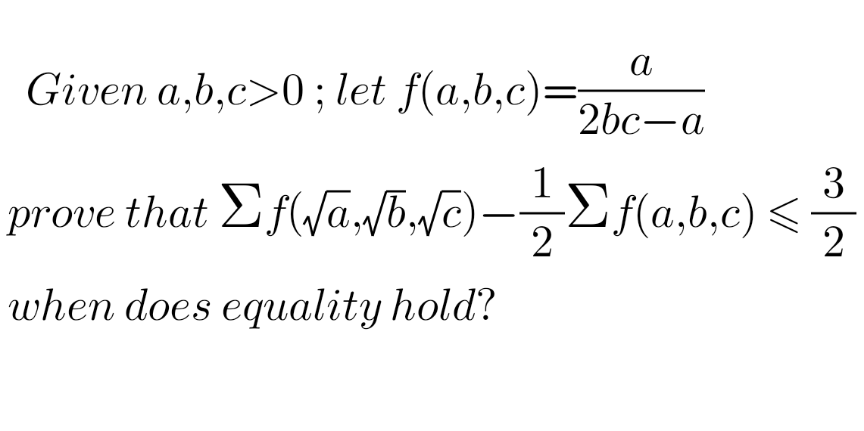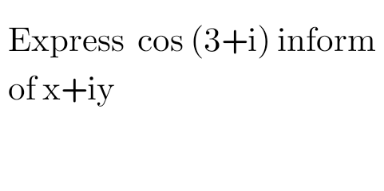
AlgebraQuestion and Answers: Page 238
Question Number 121136 Answers: 2 Comments: 1

Question Number 121127 Answers: 3 Comments: 0
Question Number 121099 Answers: 1 Comments: 0
Question Number 121041 Answers: 1 Comments: 0
Question Number 120993 Answers: 0 Comments: 0

Question Number 120984 Answers: 2 Comments: 0
Question Number 120960 Answers: 0 Comments: 0
Question Number 120953 Answers: 4 Comments: 0
Question Number 120943 Answers: 3 Comments: 1
$$\int\left({x}^{\mathrm{3}} +\mathrm{3}\right)^{\mathrm{4}} {dx}=? \\ $$
Question Number 120929 Answers: 5 Comments: 2

Question Number 120904 Answers: 1 Comments: 1

Question Number 120882 Answers: 1 Comments: 0

Question Number 120855 Answers: 2 Comments: 0
Question Number 120839 Answers: 3 Comments: 0

Question Number 120809 Answers: 0 Comments: 0
Question Number 120780 Answers: 2 Comments: 2
$${solve}\:{x}^{\mathrm{2}^{{x}} } =−\frac{\mathrm{1}}{\mathrm{2}} \\ $$
Question Number 120711 Answers: 3 Comments: 0
Question Number 120636 Answers: 0 Comments: 23
Question Number 120601 Answers: 1 Comments: 0
Question Number 120583 Answers: 0 Comments: 0

Question Number 120558 Answers: 3 Comments: 0

Question Number 120556 Answers: 0 Comments: 2

Question Number 120545 Answers: 1 Comments: 2
Question Number 120529 Answers: 1 Comments: 1

Question Number 120480 Answers: 4 Comments: 0
Question Number 120475 Answers: 1 Comments: 0

Pg 233 Pg 234 Pg 235 Pg 236 Pg 237 Pg 238 Pg 239 Pg 240 Pg 241 Pg 242
